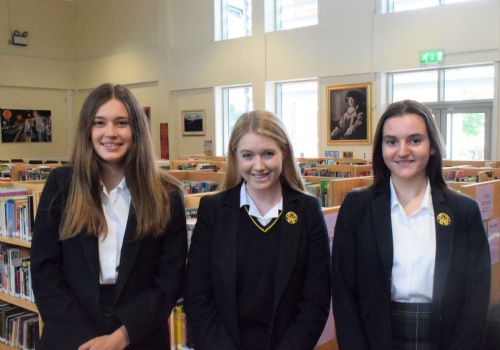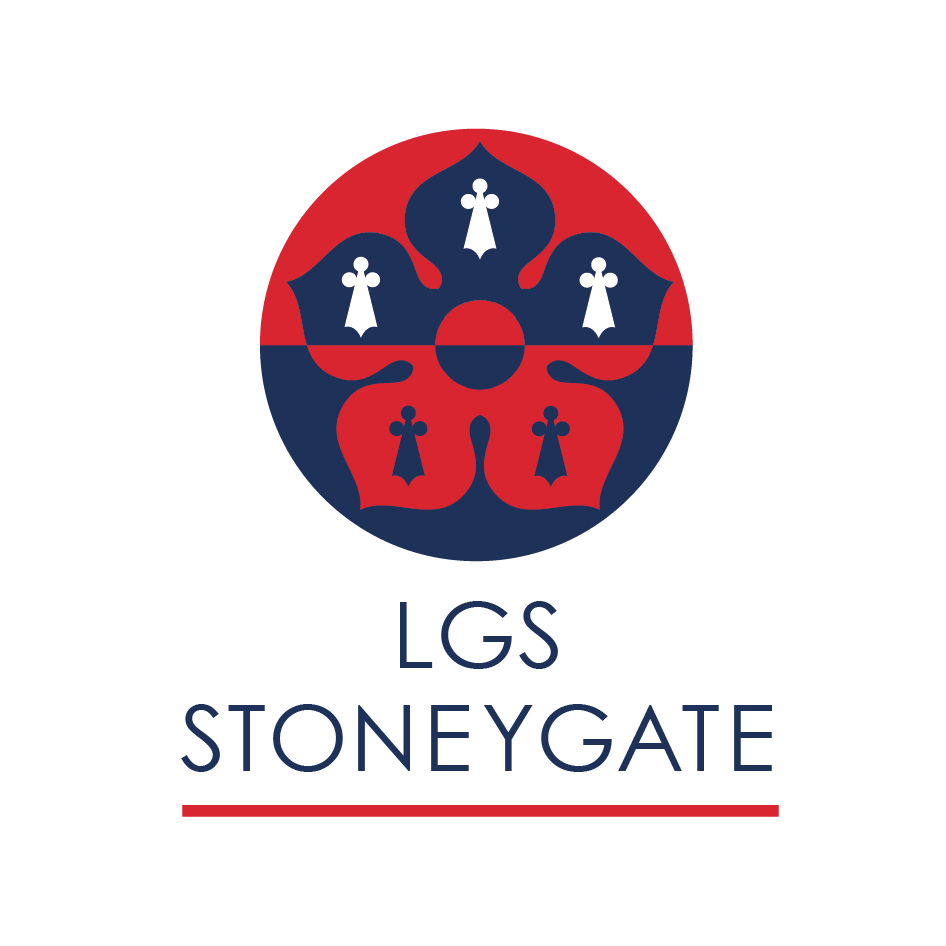BAE Systems Advancement In Technology Award

The Big Bang UK Young Scientists & Engineers Fair is the largest celebration of science, technology, engineering and maths (STEM) for young people in the UK. Having entered the "Big Bang" Science competition for the first time, Leicester Grammar School not only had 3 groups entered into the finals, but we also left having won a national award!
Smart Tenson Boots by Lily Dimitrova, Evelyn Williams and Izzi Rissbrook won The BAE Systems Advancement In Technology Award. This award recognises the key qualities of trust, partnership and boldness in engineering.
Our sixth form students, Lewis Hurd and Mustafa Mamujee were runners-up for The Siemens Award For Digital Skills with their Recommendation Engine. This project was praised for using digital innovation and skills as a catalyst for transforming everyday life.
Last but not least, Ali Khan, Gargi Nisal and Shreevani Jariwala were runner ups for The Stantec Developing Future Communities Award. Judges were highly impressed with how students’ demonstrated how science and engineering can advance the quality of life in communities across the globe.
The Big Bang Competition recognises and rewards young people’s science and engineering project work and identifies the GSK UK Young Engineer and GSK UK Young Scientist of the Year. Previous winners have gone on to represent the UK in international competitions; to study STEM at the highest levels; to work in some of our biggest engineering companies; and to set up their own businesses.
A massive well done to all the students for their amazing work and we wish them the best of luck with the Teen Tech Finals in two weeks!
We are delighted to share our Big Bang finalist projects for 2021 which were part of the Fresh Minds club.
Smart Tendon Boots by Lily Dimitrova, Evelyn Williams and Izzi Rissbrook
We wanted to create an equestrian wearable that will aid the training and sustainability of elite equine athletes and their horses. Thus, we have designed ‘Tendon Plus’- smart tendon boots for elite show jumping horses. (Tendon Boots are hard-shell boots that wrap around the horse’s lower leg). We firstly researched the theory behind this project, before building a prototype. We collaborated with several Professors and Academics from Cambridge University, The Royal Veterinary College, University of Liverpool and De Montfort University, who helped us in understanding equine tendons and locomotion, as well as MEMS systems and how we might build our prototype. As the research continued, we were able to learn more about the problems facing the equine industry, such as lameness, as well as gaps in research and studies that need to be filled. From this, we learned that our product has many potential commercial and scientific benefits across multiple industries, such as aiding veterinary studies or bettering competition rules to benefit animal welfare.
Recommendation Engine by Lewis Hurd and Mustafa Mamujee
Our project is a file manager that uses critical features that make websites like Netflix so great. Do you ever find that whenever you want to find something to watch on streaming services, that a lot of the times, it just magically appears? This is because they look at all the things you have watched before and find other movies or shows they think will appeal to you. We wanted to use the same technology but instead integrate it into the business world. Technical issues and poor organisation have been the bane of business’s since they existed. We wanted to step in and remove this considerable weight from the enterprise world. Creating a storage system that gives each user a personalised experience by showing them files they may use due to their position, department or other files they have used in the past. We worked with Clarity, Assimil8, NumPy and Mackaroo to create our Recommendation Engine.
Tooth Doctor by Ali Khan, Gargi Nisal and Shreevani Jariwala
Our project is a children’s toothbrush which utilises QLF technology, built into the toothbrush head, working through optic-fibre bristles, to detect plaque and dental caries on a child’s teeth. This will function alongside a saliva testing unit which takes samples of the child’s saliva by absorbing it through cotton built into the bottom of the toothbrush head. It then filters it through a compact filtration unit, and tests its acidity using a deconstructed, scaled-down pH meter, preventing caries, demineralisation, and other oral maladies before they even arise. The results of the QLF and saliva testing will be displayed on a companion app, containing a 3D model of the child’s teeth, and a clear, thorough dental report updated daily, providing advice for the parents on improving their child’s health. The app also encompasses a leader board and timer to incentivise brushing for young children, enabling them to maintain excellent dental health. This project was completed in collaboration with The University of California, The University of Tokyo and The Northeastern University




